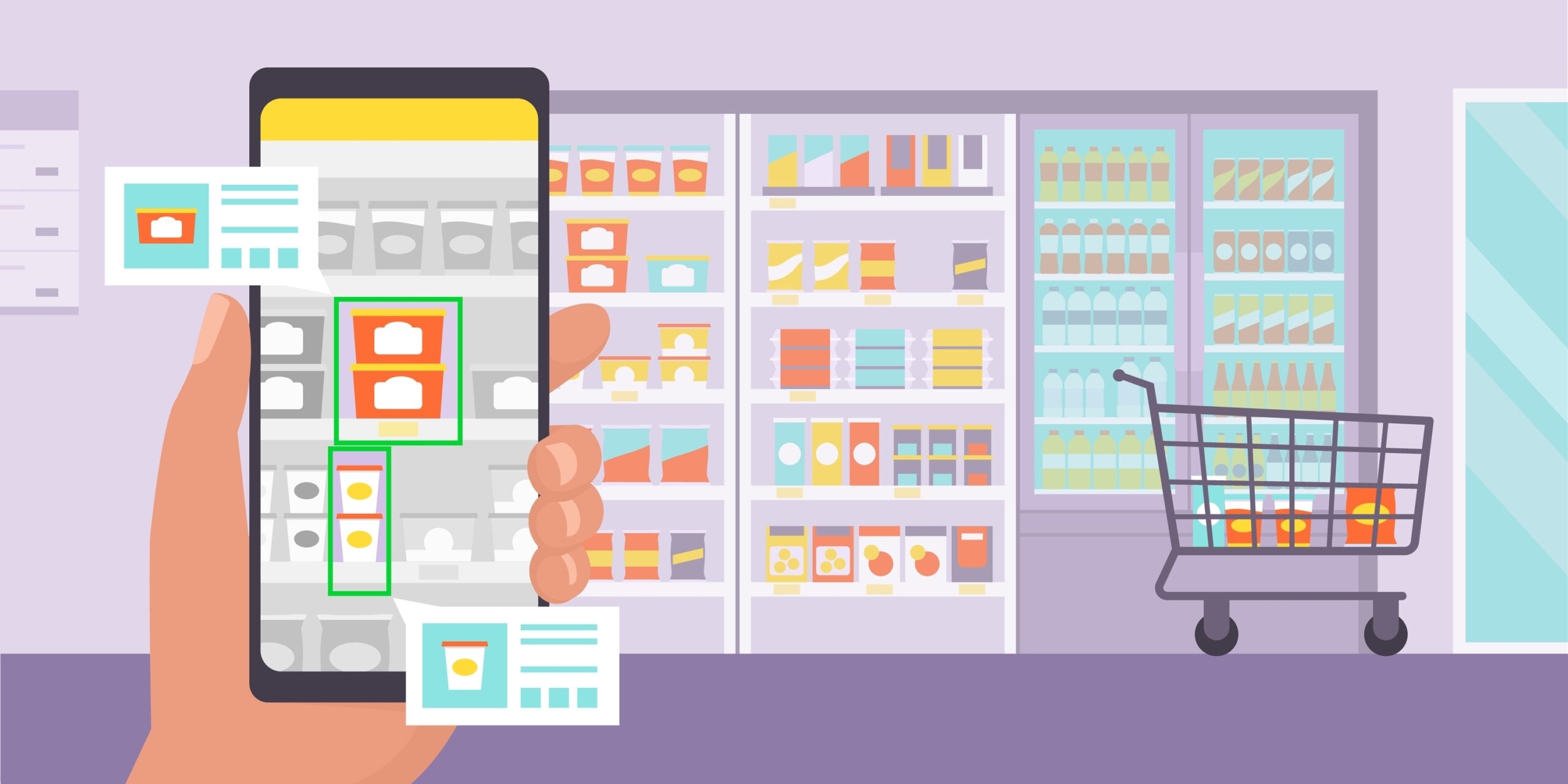In the fast-paced and competitive world of retail, brand placement on store shelves is paramount. It can be the deciding factor in catching the shopper’s eye, boosting brand recognition, and ultimately increasing sales. As businesses strive to enhance their presence in stores and improve findability for customers, data-driven decisions play a pivotal role in shaping effective supermarket product placement strategies.
In this blog post, we will explore seven winning strategies to spotlight your brand on retail shelves and elevate your position in the marketplace. From leveraging data insights to introducing innovative solutions, we’ll uncover how InContext plays a crucial role in gathering essential data to make informed decisions and optimize brand placement strategies for maximum impact.
How product placement impacts purchase intent
Understanding the impact of product placement requires analyzing planograms, considering demographics, measuring metrics, and strategically positioning retail products to maximize the visibility and sales potential of selling items within supermarket product placement. However, one thing is for sure, brand placement on retail shelves influences customers’ purchase intent. Product positioning can impact how shoppers perceive their value and desirability.
For example, products at the beginning of an aisle or the front of the store near the checkout counters can entice impulse purchases. In contrast, items placed deeper within a store may attract more intentional and considered buying decisions. The key is to remember there are exceptions to every rule. To cater to your particular shopper, testing is a must. With a thorough understanding of the correlation between placement and purchase intent, brands can strategically position their products to cater to different buying behaviors and enhance their overall sales performance. Careful consideration of the consumer journey within the store and the alignment of in-store product placement with customer preferences can lead to improved purchase intent and increased brand loyalty.
Top marketing strategies for effective brand placement
To ensure successful brand placement in grocery stores and supermarkets, use the following strategies:
- Eye-level placement: As the old saying goes, “eye level is buy level.” Eye-level placement is a powerful and strategic approach to capturing shoppers’ attention and enhancing brand visibility within a retail environment. By securing prime shelf space at eye level, products become more noticeable and appealing to potential customers. This strategic positioning leverages the natural browsing behavior of shoppers, making it easier for them to spot and consider the products–increasing purchase chances and ultimately driving sales. The tactic can be especially beneficial for new or featured products seeking to create a solid first impression and stand out from competitors. Yet, it’s a myth that eye-level is always the best option, which is why we recommend testing with shoppers before executing at the shelf.
- Using endcap displays: Endcap displays offer a fantastic opportunity for businesses to create eye-catching and captivating promotional showcases. Placing featured products on endcaps, the displays at the end of aisles naturally attract shoppers’ attention as they walk. This prime location provides an excellent space to highlight special offers, seasonal items, or newly launched products. Leveraging endcap displays effectively not only results in heightened brand exposure but also contributes to increased sales and customer engagement. These displays serve as a focal point, enticing shoppers to explore the products further and make additional purchases. Furthermore, endcap displays can create a sense of urgency, prompting impulse buying and reinforcing brand loyalty.
- Cross-merchandising opportunities: Opportunities present an ingenious way to enhance the customer experience and drive additional sales. By strategically pairing complementary products together, businesses encourage add-on purchases and improve the overall shopping experience for customers. Cross-merchandising can create a sense of convenience for shoppers, leading them to discover new products that complement the ones they are already interested in. This strategy strengthens brand associations and fosters brand loyalty, as customers see the value of the products working harmoniously together. Moreover, cross-merchandising can increase sales, prompting customers to buy more than initially intended, thereby boosting the average transaction value.
- Cross-channel placement: Cross-channel placement is a comprehensive and data-driven approach to maximizing product visibility and sales within a retail environment. It strategically positions products across various store areas, considering customer behavior and shopping patterns. By analyzing data and understanding how customers move through the store, businesses can identify the most profitable locations for their products. Embracing cross-channel placement allows brands to optimize their retail space to capture shoppers’ attention at multiple touchpoints. This multi-dimensional strategy increases the likelihood of conversion. It delivers a seamless shopping experience, guiding customers effortlessly through their buying journey. Businesses can build brand trust and loyalty by offering consistent messaging and product placement across channels, encouraging repeat purchases and long-term customer relationships.
- Eye-catching packaging: Eye-catching packaging design plays a pivotal role in brand recognition and product appeal. Investing in visually appealing and distinctive packaging helps products stand out from competitors, attracting shoppers and making a lasting impression. Effective packaging design entices customers to pick up the product and reinforces brand recognition, contributing to a strong brand identity. The packaging becomes an extension of the brand, telling a story and evoking emotions that resonate with customers. With a well-executed packaging design, businesses can create a positive and memorable first impression, increasing customer engagement and ultimately driving sales.
- Shelf-edge signage: Shelf-edge signage and product callouts are essential for guiding shoppers’ attention to specific products and promotions. Utilizing signs, banners, and price tags at the shelf edge effectively draws customers’ eyes to relevant products and enticing offers. Well-crafted callouts pique interest and influence purchase decisions, encouraging shoppers to take action and purchase. These strategic callouts can highlight product features, benefits, or limited-time promotions, creating a sense of urgency and prompting immediate action. By using eye-catching signage and compelling callouts, businesses can maximize the potential of every shelf space, enhancing the visibility and appeal of their products to customers.
- Consistency across channels: Consistency across channels is fundamental to building a solid brand image and fostering customer trust. Maintaining a seamless and cohesive brand experience across various marketing channels, both in-store and online, reinforces brand recognition and establishes a sense of reliability. Consistent branding across channels helps customers identify and connect with the brand, leading to increased brand loyalty and a positive customer experience. When customers encounter a consistent brand message and visual identity across different channels, it solidifies the brand’s position in their minds. It creates a sense of familiarity and trust. Maintaining consistency across channels also ensures that customers receive a unified brand experience, regardless of where and how they engage with the brand. This cohesive experience reinforces brand credibility and encourages customer loyalty, driving repeat purchases and advocacy.
How customer data drives success
Customer data and insights are powerful drivers of business success, enabling companies to make informed decisions about various aspects, including brand placement. By analyzing data collected from customer behaviors, preferences, and purchasing patterns, businesses can identify prime locations within stores and supermarkets for optimal brand visibility. These insights allow companies to strategically position their products in areas that attract the most customer attention, increasing the likelihood of conversions.
Moreover, understanding customer preferences through data analysis helps tailor brand placement to individual tastes, fostering a more personalized shopping experience that resonates with consumers. This data-driven approach to brand placement enhances customer satisfaction and drives increased brand recognition and loyalty, ultimately contributing to the business’s overall success.
InContext: Ensuring results the first time
In retail, data-driven decisions are paramount to ensure success and avoid potential missteps that could negatively impact your brand. InContext’s ShopperMX Platform, a cutting-edge virtual store platform, empowers retail teams to visualize their strategies in a risk-free digital twin of the store. With over 80 virtual store environments, you can visualize multiple assortments, endcaps, signage, displays, and more, all in a dynamic 3D space. Through walkthroughs, screenshots, and videos, you can gather valuable insights into how shoppers will react to in-store ideas, enabling you to make informed decisions before implementing any changes on the retail shelves.
With our expertise and industry-leading 3D asset pipeline, you can leverage our network of global members to tailor 3D models to your specific needs and confidently execute your strategies. By partnering with InContext, you can ensure your brand placement decisions are data-backed, strategic, and poised for success, optimizing brand recognition and findability on retail shelves.
Example 1: Product placement for increased sales
A well-known global spirits manufacturer wanted to make their product stand out on the shelves of a major wine and spirits store. They aimed to convince the store to rearrange how they displayed their products.
They ran a test leveraging ShopperMX to create 3D mock-ups. They compared the original arrangement (control) and the proposed new one (test). They looked at things like sales, how shoppers behaved, what they noticed, and how easy it was to find products in each setup, and the results were impressive. The new arrangement increased sales for the entire spirits category by more than 10%. The manufacturer’s brand also sold better, and people started choosing more premium products.
Virtual research and tools like ShopperMX’s 3D simulations can be a game-changer for brands. The new arrangement led to a significant increase in sales, proving that how products are displayed can boost business.
Example 2: Setting up new products for success
In another example, a manufacturer wanted to introduce a new product in an unfamiliar category and grappled with where to place it. To tackle this, they turned to InContext’s virtual simulation technology to guide their approach. In the test, participants were invited to explore the virtual store and pinpoint where they would instinctively look for this hybrid product. They completed a survey that gauged their willingness to search further if the item differed from what they expected.
The data unveiled a strong correlation between the product and the category commonly associated with its new form rather than the brand’s existing offerings. Despite the brand’s initial intention of integrating the product with its current range, it opted to align with the form-based location. This strategic decision facilitated a successful product launch and paved the way for the brand’s seamless entry into an entirely new category.
Partner with InContext for data-driven success
Strategic brand placement in retail elevates a brand’s presence, fosters customer engagement, and drives sales. Businesses can unlock valuable insights into consumer behavior and preferences by making decisions data-driven, enabling them to implement more effective placement strategies. InContext partners with companies by leveraging cutting-edge tools, like ShopperMX, to help them optimize brand visibility and customer experience. As the retail landscape changes, adopting new technologies and staying updated with emerging trends will be crucial for staying competitive in an evolving market.





